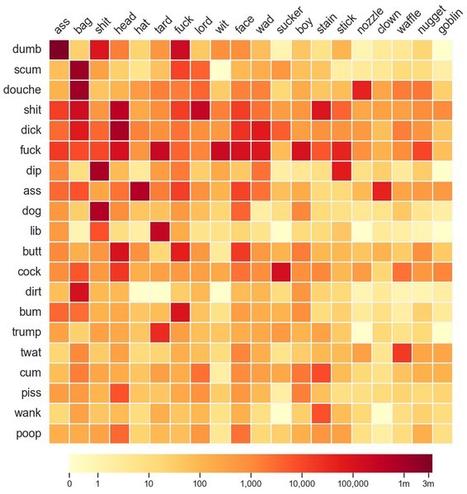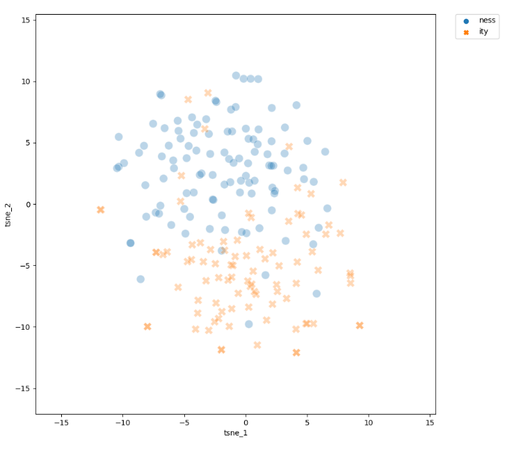New paper on #English #wordFormation with -ity and -ness out.
What is it about? In a nutshell: What determines the choice of ity/ness
for a given adjective? And do the two affixes contribute the same
meaning? (1/9)
#morphology
#WordFormation
diese maligne Geschwulst des Seins
lauter Sehensunwürdigkeiten
Terézia Mora, Das Ungeheuer
Nice example for effective affix use: "a disproportionate amount of disapproval". Note the slight cline in #semanticTransparency from the first "dis" to the second.
Source: Jassy Mackenzie, Stolen Lives
#English #wordFormation
One of my favorite #English #wordFormation facts: "atone" is not a #borrowing from Latin or French, but a #MiddleEnglish conversion from "at one", according to the #OED helped by the prior existence of the verb "one" and the usage of "onement". "atone" then took the place of the verb "one".
Behold! The Matrix of Pejoration, by Colin Morris
https://languagelog.ldc.upenn.edu/nll/?p=60998
#insults #Reddit #words #WordFormation #compounding #language
There's "hairpiece" and there's "earpiece", but while in close proximity physically, they don't have much else in common.
#Composition #WordFormation
Getting ready to leave for #iclc16 in Düsseldorf, here a small teaser for my talk on Tuesday 14:45 on the #affix rivalry between -ity and -ness in #English:
Why to some adjectives take -ity (insular -> insularity), while others take -ness (red -> redness)? Many factors have been considered, I use #distributionalSemantics to explore the role of the adjective's meaning. Mapping the vectors on a two dimensional space with t-SNE, a dimensionality reduction technique, the resulting visualization shows that adjective meaning might indeed be a highly relevant factor. For example, even for adjectives with the same ending -ive, the bases of those taking -ity (e.g. narrativity) and those taking -ness (distinctiveness) fall into two clear clusters.
Looking forward to seeing some of you there :)
#wordformation
I guess if you write a book on #English #wordformation, you might as well use as many fancy derivatives yourself as you want: Marchand (1969:259) states that many -ate adaptions are "not clearly etymologizable."
#English #wordFormation at its best, with a proper name as the root and everybody's favorite affix, comparative out-:
"Ron DeSantis cannot ‘out-Trump Trump’ in primary, Ocasio-Cortez says"
For everything on "out-", check out my Düsseldorf ex-colleague Sven Kotowski's paper:
https://link.springer.com/article/10.1007/s11525-023-09405-8
Source: https://www.theguardian.com/us-news/2023/jul/10/ron-desantis-trump-primary-ocasio-cortez
The standard #translation for "dictator" in #Mandarin #Chinese is 独裁者 dúcáizhě, which is morphologically interesting because it ends on "-zhe", one of the most versatile elements for creating nouns refering to persons (sometimes similar to English "-er", e.g. 读/读者 dú/dúzhě read/reader ) and here with the base 独裁 dúcái meaning "dictatorship". Perhaps more interesting: while #Wikipedia in its English and Chinese editions lists 毛泽东 Máo Zédōng as an example, he does not feature in mainland China's #BaikeBaidu 百度百科 bǎidù bǎikē. In the long lists they provide, modern China is represented by two safe non-communist rule choices, 蒋介石 Jiǎng Jièshí (=Chiang Kai-shek) and 袁世凯 Yuán Shìkǎi. At the same time, they have Magaret Thatcher for Great Britain.
#morphology #wordformation

